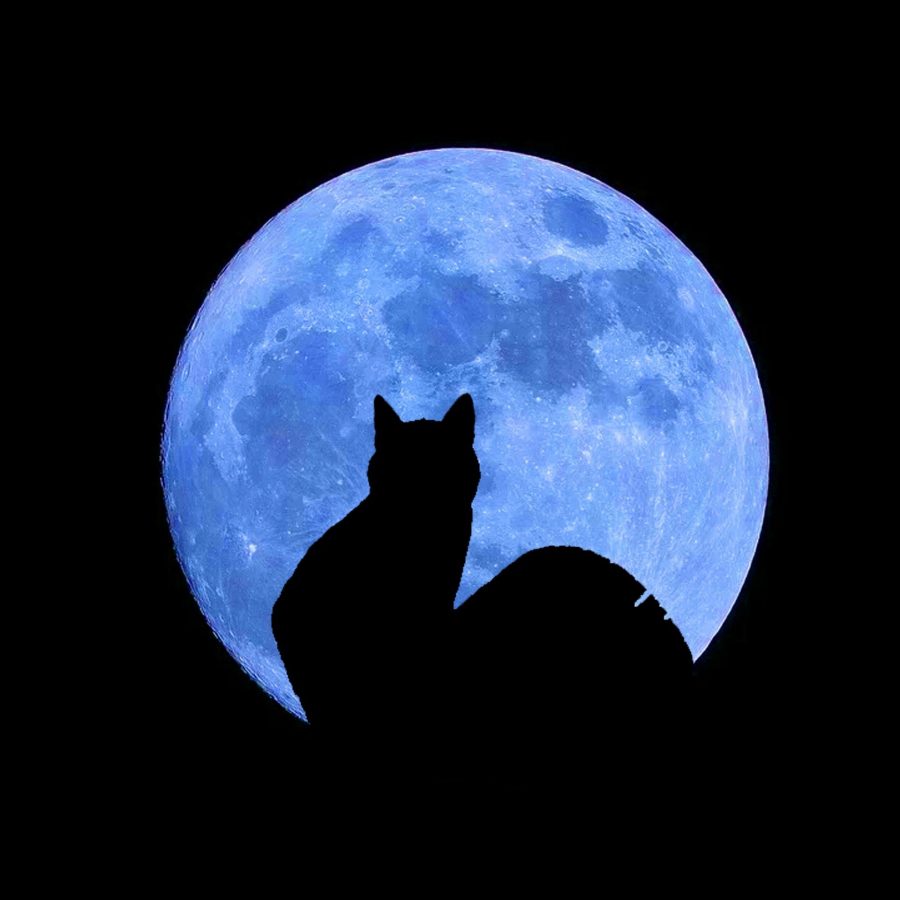October set to end with a blue moon on Halloween
November 6, 2020
Werewolves weren’t howling at just any full moon on Halloween this year. The spooky holiday was graced with a lunar singularity: a Halloween blue moon.
At the beginning of October, the world saw a harvest moon. This moon is considered the closest to the autumnal equinox. Its name stems from the fact that farmers supposedly used the light of this moon when forced to harvest crops late at night, according to The Old Farmer’s Almanac.
That harvest moon sighting on Oct. 1 also meant from a scientific standpoint that another full moon would rise in the same month. The second sighting was the blue moon that marked the end of spooky season.
In the United States, one commonly used expression is “once in a blue moon.” Though it means something that rarely happens, this isn’t entirely true of blue moons.
The scientific name for a blue moon is a Hunter moon, and there are two ways to define blue moons: seasonal and calendrical.
A seasonal blue moon is the third full moon that comes at the end of an entire season. A season lasts from solstice to solstice for summer and winter, and from equinox to equinox for fall and spring.
Usually, one full season has three full moons. If a season has four, the third full moon is considered to be the blue moon. This is because the other three moons do not stray from the lunar cycle, but the third moon does.
A calendrical blue moon is “the second full moon to occur in a calendar month,” according to The Old Farmer’s Almanac. The almanac also mentions that one moon cycle lasts about 29.5 days. Therefore, if there is a full moon on the first of a month, a second one is guaranteed at the end of it. That moon would be considered a blue moon.
The latter of the two became the mainstream definition of a blue moon over time. Hence, the second moon that appeared on Oct. 31 would be considered a blue moon by the calendrical blue moon standard.
The next blue moon is expected to be on Aug. 30, 2023. Clearly, blue moons are more common than they seem considering they have a predictable pattern of when they’ll appear.
The rare aspect, however, is that this blue moon was visible on Halloween.
“When I was teaching, my high school students thought a full moon occurred every Halloween,” Jeffrey Hunt, astronomy educator and former planetarium director, said.
Contrary to popular belief, the last time this lunar event occurred was in 1944. Some experts now predict that the next one won’t come for another eighteen to nineteen years, while others say a Halloween blue moon won’t light up the sky until 2039. While social distancing measures prevented Halloween parties and normal trick-or-treating, this spectacle threaded the distances between people, bringing them together under the same sky as they gazed outside. Though the 2020 pandemic has left many with a sour taste regarding their Halloween plans, the predicted rare blue moon was a much-needed treat.








